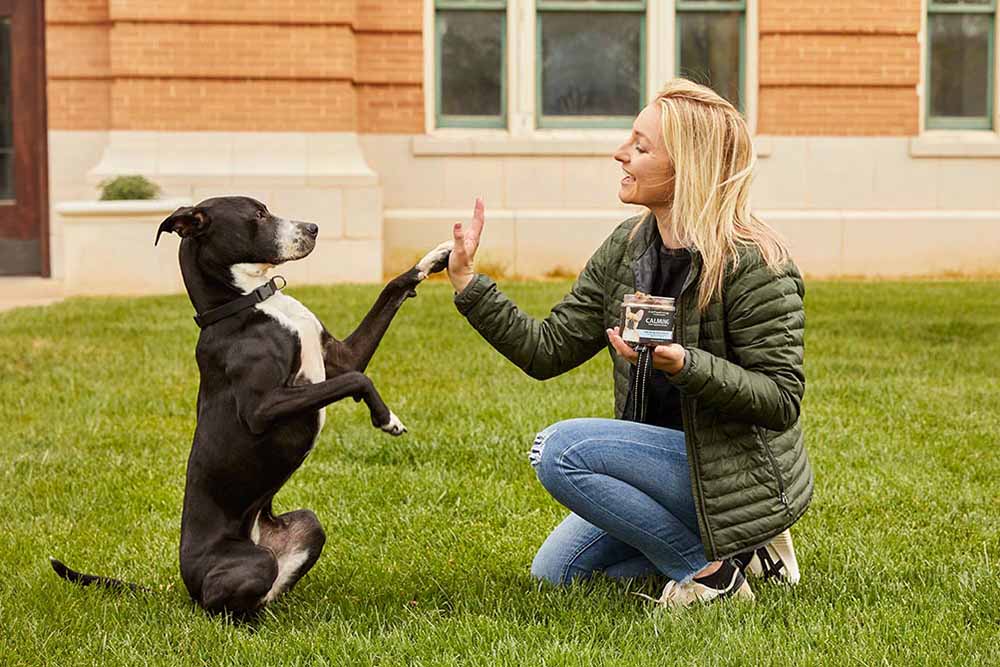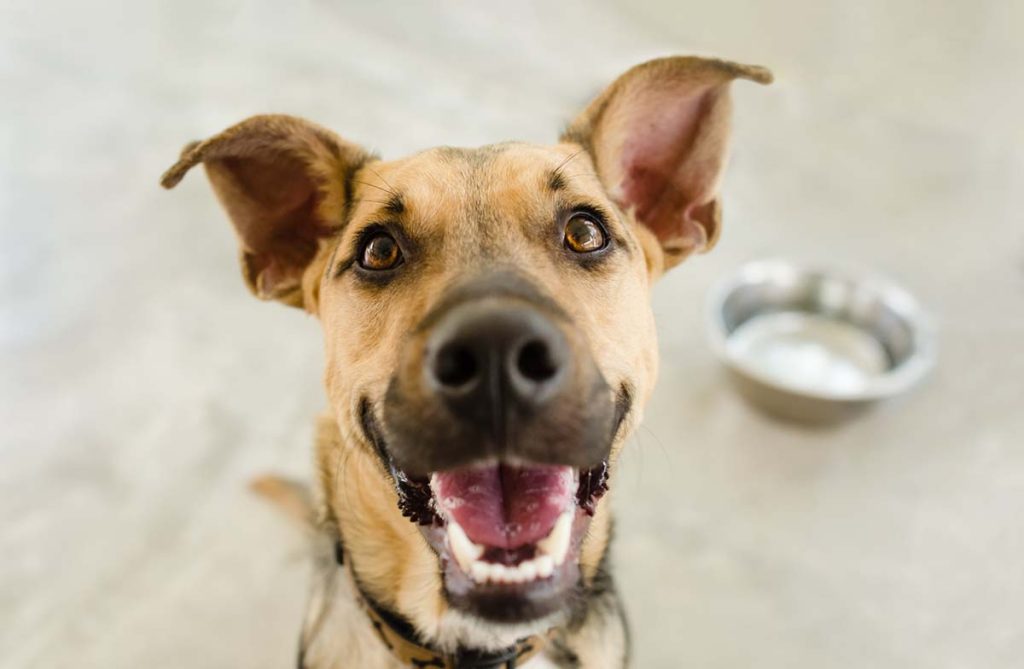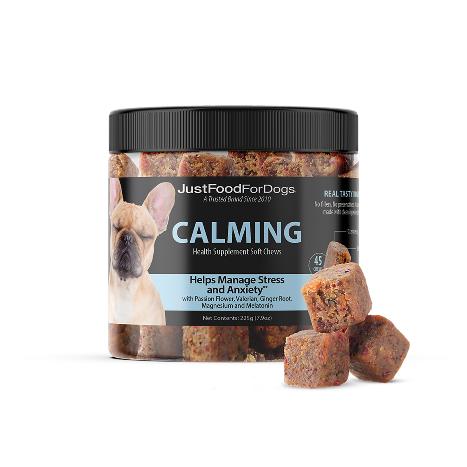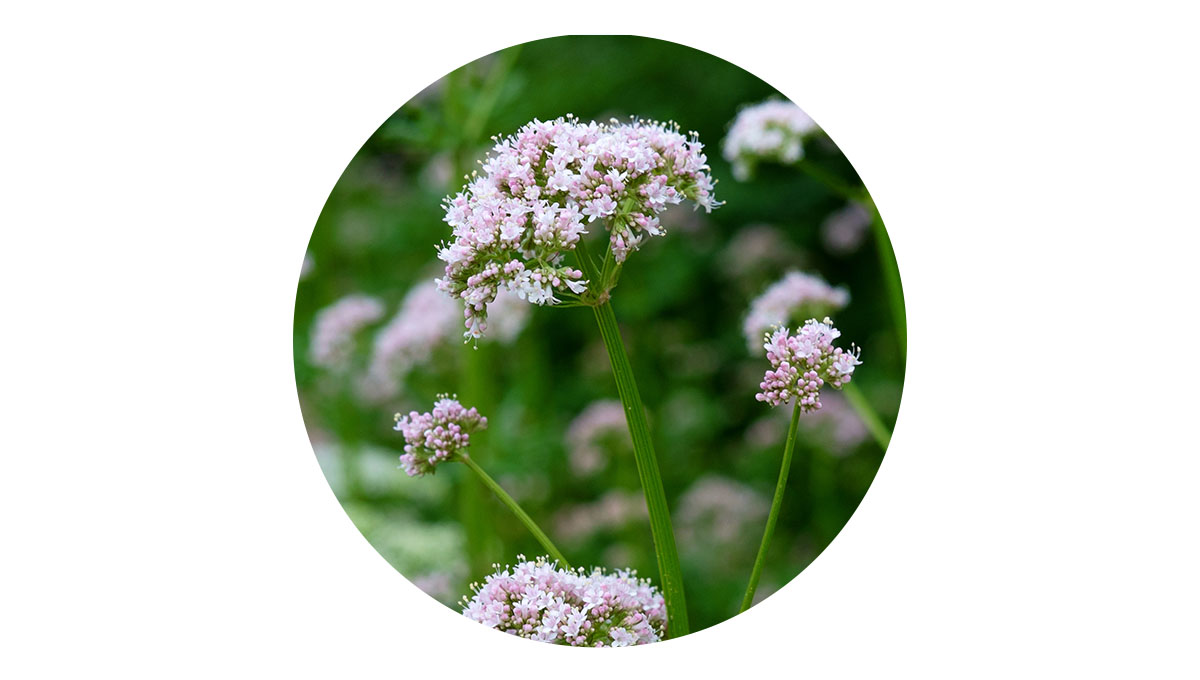All any loving pet parent wants for their four-legged friend is for them to have a happy, healthy life. That’s why it’s so hard to see them terrified during thunderstorms or when he hears other loud noises. It’s almost as stressful for you when he’s suffering from separation anxiety, being anxious during car rides, or reacting fearfully in other stressful situations.
As pet owners seek relief for their dogs who suffer from anxiety in any situation, valerian root has garnered more attention. But is valerian root safe for dogs? Is it effective at alleviating stress or insomnia? And can it help calm your dog’s hyperactivity during times when he’s fearful?
Let’s examine this herbal supplement more closely to understand how it works and whether you should consider it for your dog or not.
What Is Valerian Root?
Valerian root is an herbal supplement shown to promote relaxation in humans. Its uses include promoting a calming effect and supporting emotional balance. Many veterinarians also recommend it for anxious canines.
Valerian comes from Valeriana officinalis, a flowering plant native to Europe and Asia. While experts aren’t sure exactly how valerian works, many believe it increases the amount of a neurotransmitter — gamma-aminobutyric acid (GABA) — in the brain. Neurotransmitters are substances that facilitate the electrical impulses between neurons in the brain, and they can also block certain transmissions.
GABA is known to block nerve transmissions that stimulate activity, thereby producing a calming effect. Though this is how valerian root is believed to work, more research is needed to conclusively know if it really can calm your canine friend.
What Does the Science Say About Valerian Root Use in Dogs?

One study found that valerian root had some calming effects in rabbits. While that indicates some effectiveness, it’s important to note that different species may react differently to the same substance.
In another study conducted on dogs, the valerian-based treatment Pet Remedy was reported anecdotally to have improved anxious dogs’ behavior. Unfortunately, researchers did not find a statistically significant difference in anxiety-related behaviors of those same dogs.
In yet another study using dogs, there were no significant differences between Pet Remedy, the active ingredient of which is valerian root, and the placebo. Researchers concluded there were no behavioral indicators of reduced stress in the dogs given the valerian root product.
A study conducted by experts in two universities in the U.S. found valerian root to be effective at reducing anxiety in rats.
As you can see, there is little significant scientific evidence. However, there are veterinarians, particularly holistic veterinarians, whose clients have found it to have sedating qualities in their pets.
While anecdotal in nature, it’s hard to ignore first-hand claims from pet owners about the benefits of valerian root for their beloved furry friends.
What are the Potential Side Effects of Valerian Root for Dogs?
Overall, valerian root is considered a safe supplement with minimal side effects. However, as with any drug or supplement, check with your veterinarian first before giving your dog anything new.
It’s important to remember that side effects can happen with any kind of drug. Valerian root could interact with other medications your pet is taking, for example. It’s also usually not a good idea to give pregnant dogs, lactating dogs, or puppies supplements like valerian root.
Some of the side effects of valerian root included drowsiness, lowered body temperature, lethargy, sedation, and unsteadiness. These are what you would expect from a supplement that works with the nervous system to produce a calming effect. Even so, they could become extreme and might require a vet visit.
It’s also important to remember that even though your friends might sing the praises of valerian root in their pets, dogs are individuals, and it might not work as well for your dog.
How Should You Give Valerian Root to Your Dog?

As with anything new, be sure to check with your veterinarian about supplementation before giving it to your dog. They know your dog’s state of health and are in the best position to determine if something is safe to give them.
That being said, you can give it as a dog supplement in capsule form, a tincture, or even dried whole root. If your dog isn’t good about taking capsules or pills, try sprinkling it on their dog food. You can also try hiding the capsule in peanut butter (natural peanut butter without any xylitol), or give them dog treats or soft chews containing the active ingredient. Many calming soft chews for dogs often include valerian as an ingredient.
You can administer valerian root tincture directly via a dropper or on their dog food. You can also put the dried root form in your dog’s food. Whether administered as a capsule, tincture, or dried root, you want to begin administering it in small doses beginning a few days before a known anxiety-inducing event, such as prior to the fireworks on July 4th, for example.
A valerian root supplement, in and of itself, may help keep your dog calm and relaxed. However, you might also want to try other methods to help calm your dog.
What Other Things Can You Do to Alleviate Your Dog’s Anxiety?

There are several other things you can do to help your dog overcome his anxiety. It’s helpful, for example, to have a safe space where he can go and feel comfortable. You can even play white noise or music so he won’t hear loud noises that might be producing anxiety.
You can also distract your dog during a stressful event with dog treats, food puzzles, or nose work. For example, you could sprinkle treats around the room for your dog to find.
It goes without saying that while anxiety-provoking events such as thunderstorms or fireworks are going on, keep your dog inside. If he is outside, he could panic and run off.
You can also try desensitization behavioral therapy for your pet. This involves exposing your pet to the stressor at low levels while simultaneously pairing that with exposure to things your dog loves that make him feel happy and calm.
Finally, if you’ve tried everything you can think of, and your dog’s anxiety shows no signs of improving, you might consider medication prescribed by your veterinarian.
What About Valerian Root in Cats?

As with many medications and substances, cats often react very differently from dogs. Valerian root is no exception to that. Cats are, in fact, stimulated by valerian and often show a euphoric response similar to what happens when they are exposed to catnip.
As much as 50% of cats exposed to valerian became excited and playful. They chewed the leaves of the root, sniffing them, and rolling around in them. For this reason, most veterinarians don’t recommend using valerian root to treat anxiety in cats, though some will use it for stress-related overgrooming.
For cats, many veterinarians recommend pheromone diffusers or products like Zylkene, which has shown positive effects in cats.
The Bottom Line About Valerian Root for Dogs

Overall, valerian root is a safe supplement that may benefit your dog’s overall wellness and help manage stress.
Before giving your furry friend any herbal medicine, however, it’s vital to check with your veterinarian. Valerian root may cause certain side effects and interact with other medications. Your veterinarian is the best person to advise you on whether it’s safe or not.
Citations
Unwin, Sarah Louise, Richard Anthony Saunders, Emily-Jayne Blackwell, and Nicola Jane Rooney. 2019. “A Double-Blind, Placebo-Controlled Trial Investigating the Value of Pet Remedy in Ameliorating Fear of Handling of Companion Rabbits.” Journal of Veterinary Behavior 36 (January). https://doi.org/10.1016/j.jveb.2019.10.001.
Lloyd, Katharine, Alison Wills, and Sienna Taylor. 2019. “The Anxiolytic Effects of Valerian (Valeriana Officinalis) on the Domestic Dog (Canis Familiaris).” Hartpury University. July 4, 2019. https://pure.hartpury.ac.uk/en/publications/the-anxiolytic-effects-of-valerian-valeriana-officinalis-on-the-d.
Taylor, Sienna, and Joah Madden. 2016. “The Effect of Pet Remedy on the Behaviour of the Domestic Dog (Canis Familiaris).” Animals 6 (11): 64. https://doi.org/10.3390/ani6110064.
Murphy, K., Z.J. Kubin, J.N. Shepherd, and R.H. Ettinger. 2010. “Valeriana Officinalis Root Extracts Have Potent Anxiolytic Effects in Laboratory Rats.” Phytomedicine 17 (8-9): 674–78. https://doi.org/10.1016/j.phymed.2009.10.020.
Bol, Sebastiaan, Adrian Scaffidi, Evelien M. Bunnik, and Gavin R. Flematti. 2022. “Behavioral Differences among Domestic Cats in the Response to Cat-Attracting Plants and Their Volatile Compounds Reveal a Potential Distinct Mechanism of Action for Actinidine.” BMC Biology 20 (1). https://doi.org/10.1186/s12915-022-01369-1.
Beata, Claude, Edith Beaumont-Graff, Victoria Coll, Jacques Cordel, Muriel Marion, Nicolas Massal, Nathalie Marlois, and Jerome Tauzin. 2007. “Effect of Alpha-Casozepine (Zylkene) on Anxiety in Cats.” Journal of Veterinary Behavior 2 (2): 40–46. https://doi.org/10.1016/j.jveb.2007.02.002.
This content is for informational use only and does not replace professional nutrition and/or medical advice, diagnosis, or treatment. It is not a substitute for and should not be relied upon for specific nutrition and/or medical recommendations. Please talk with your veterinarian about any questions or concerns.
